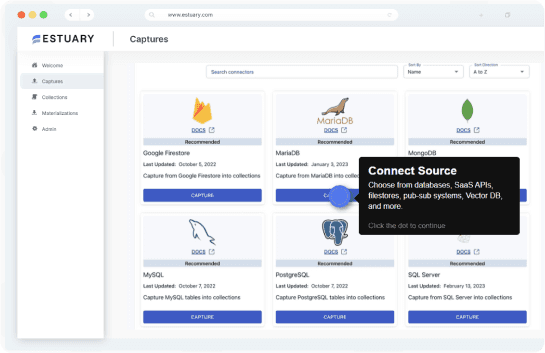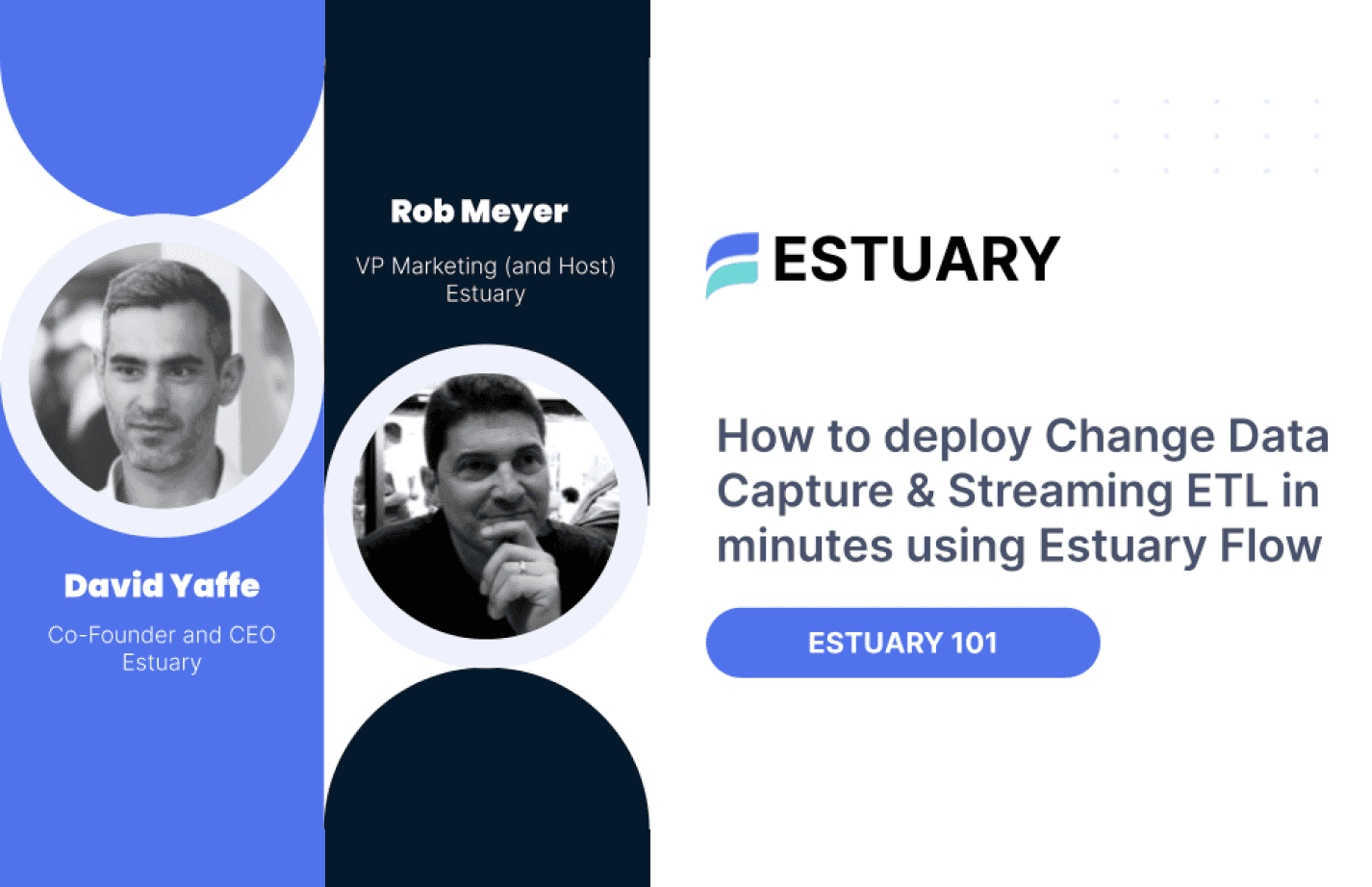Rivery VS Talend
Read this detailed 2025 comparison of Rivery vs Talend. Understand their key differences, core features, and pricing to choose the right platform for your data integration needs.
View all comparisons
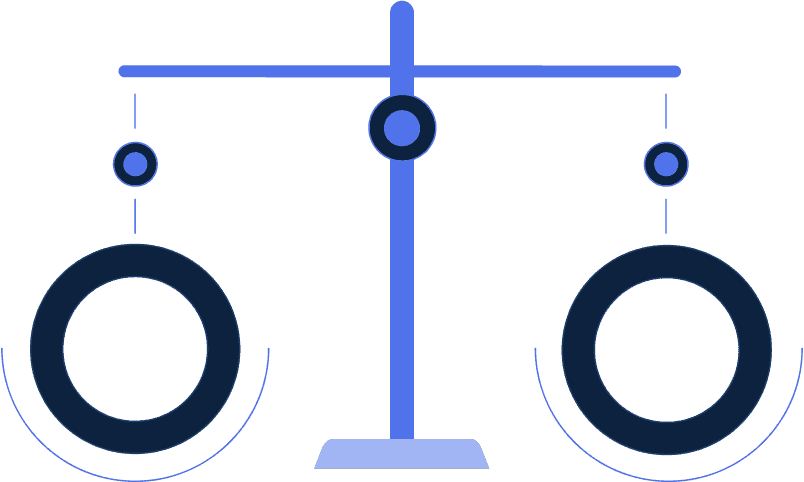

Introduction
Do you need to load a cloud data warehouse? Synchronize data in real-time across apps or databases? Support real-time analytics? Use generative AI?
This guide is designed to help you compare Rivery vs Talend across nearly 40 criteria for these use cases and more, and choose the best option for you based on your current and future needs.
Comparison Matrix: Rivery vs Talend vs Estuary
 |  |  | |||||||||||||||||||||||||||||||||||||||||||||||||||||
|---|---|---|---|---|---|---|---|---|---|---|---|---|---|---|---|---|---|---|---|---|---|---|---|---|---|---|---|---|---|---|---|---|---|---|---|---|---|---|---|---|---|---|---|---|---|---|---|---|---|---|---|---|---|---|---|
| |||||||||||||||||||||||||||||||||||||||||||||||||||||||
| |||||||||||||||||||||||||||||||||||||||||||||||||||||||
| |||||||||||||||||||||||||||||||||||||||||||||||||||||||
| |||||||||||||||||||||||||||||||||||||||||||||||||||||||
| |||||||||||||||||||||||||||||||||||||||||||||||||||||||
| |||||||||||||||||||||||||||||||||||||||||||||||||||||||

Rivery
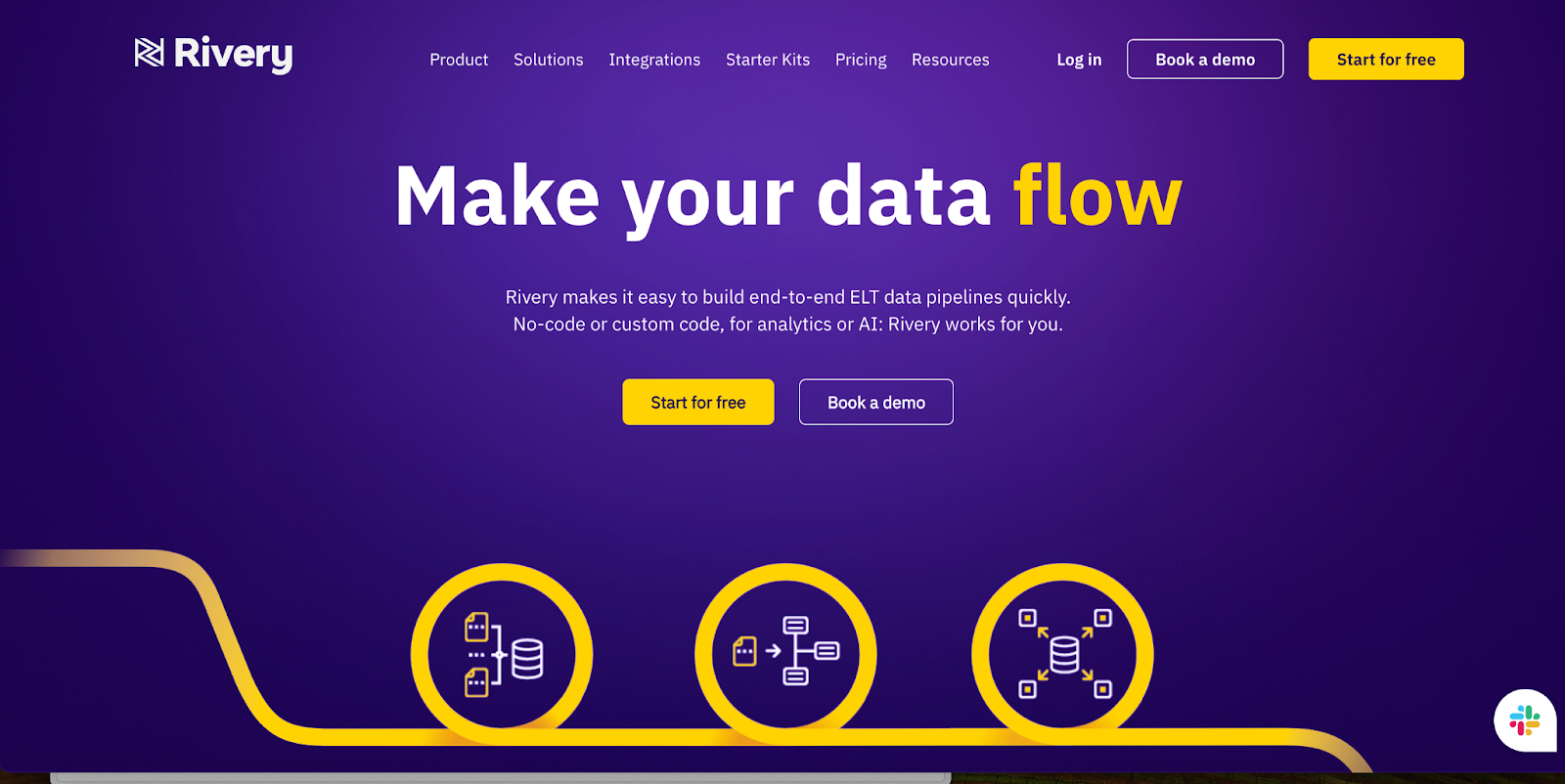
Rivery was founded in 2019. Since then it has grown to 100 people and 350+ customers. It’s a multi-tenant public cloud SaaS ELT platform. It has some ETL features, including inline Python transforms and reverse ETL. It supports workflows and can also load multiple destinations.
But Rivery is also similar to batch ELT. There are a few cases where Rivery is real-time at the source, such as with CDC, which is its own implementation. But even in that case it ends up being batch because it extracts to files and uses Kafka for file streaming to destinations which are then loaded in minimum intervals of 60, 15, and 5 minutes for the starter, professional, and enterprise plans.
If you’re looking for some ETL features and are OK with a public cloud-only option, Rivery is an option. It is less expensive than many ETL vendors, and also less expensive than Fivetran. But its pricing is medium-high for an ELT vendor.
Rivery's future offerings, policies, and pricing may be uncertain as they undergo an acquisition with Boomi.
Pros
- Modern data pipelines: Rivery is the one other modern data pipeline platform in this comparison along with Estuary.
- Transforms: You have an option of running Python (ETL) or SQL (ELT). You do need to make sure you use destination-specific SQL.
- Orchestration: Rivery lets you build workflows graphically.
- Reverse ETL: Rivery also supports reverse ETL.
- Load options: Rivery supports soft deletes (append only) and several update-in-place options including switch-merge (to merge updates from an existing table and switch), delete-merge (to delete older versions of rows), and a regular merge.
- Costs: Rivery is lower cost compared to other ETL vendors and Fivetran, though it is still higher than several ELT vendors.
Cons
- Batch only: While Rivery does extract from its CDC sources in real-time, which is the best approach, it does not support messaging sources or destinations, and only loads destinations in minimum intervals of 60 (Starter), 15 (Professional), or 5 (Enterprise) minutes.
- Data warehouse focus: While Rivery supports Postgres, Azure SQL, email, cloud storage, and a few other non data warehouse destinations, Rivery’s focus is data warehousing. It doesn’t support the other use cases as well.
- Public SaaS: Rivery is public cloud only. There is no private cloud or self-hosted option.
- Limited schema evolution: Rivery had good schema evolution support for its database sources. But the vast majority of its connectors are API-based, and those do not have good schema evolution support.
Rivery Pricing
Rivery charges per credit, which is $0.75 for Starter, $1.25 for Professional, and negotiated for Enterprise. You pay 1 credit per 100MB of moved data from databases, and 1 credit per API call. There is no charge for connectors. If you have low data volumes this will work well. But by the time you’re moving 20GB per month it starts to get more expensive than some others.
Talend
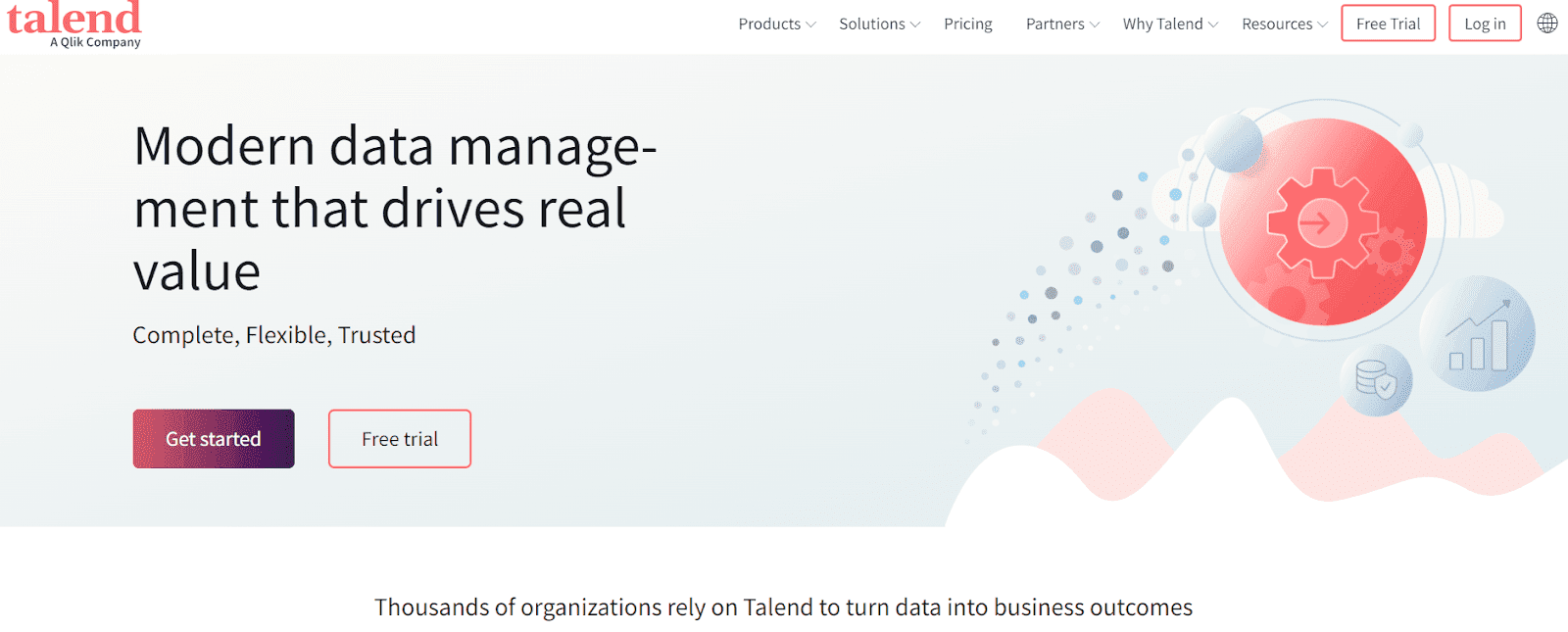
Talend, now part of Qlik, has two main products—Talend Data Fabric and Stitch, which is ELT. Talend Data Fabric is a data integration platform that, like Informatica, is broader than ETL. It also includes data quality and data governance capabilities.
Talend also had an open-source solution, Talend Open Studio, that could help you kickstart your first data integration and ETL projects. It was discontinued by Qlik in 2024.
You could use Talend Open Studio for data processes that require lightweight workflows. The majority of enterprise data pipelines would find Data Fabric more suitable.
Pros
- ETL platform: Data Fabric has rich transformation, data mapping, and data quality features that help with building data pipelines.
- Real-time and batch: Real-time support includes streaming CDC.
- Strong monitoring and analytics: Like Informatica, Talend has built up good visibility for operations.
Cons
- Learning curve: Talend has an older UI that takes time to learn. Building transforms can take time.
- Limited Open Studio features: While Open Studio is free, it’s also limited. Other open source options are less limited in their capabilities.
- Limited connectors: Talend claims 1000+ connectors. But it lists 50 or so databases, file systems, applications, messaging, and other systems it supports. The rest are Talend Cloud Connectors, which you create as reusable objects.
- High costs: Talend isn't transparent about pricing and doesn't list their current rates. Different tiers may relate to data volume, job executions, and duration. Ultimately, it costs more than most pay-as-you-go tools, as well as Stitch.
Talend Pricing
Pricing quotes are only available upon request. Potential clients should study the pricing tiers carefully, as lower tiers may not include common or desired functionality, like CDC capabilities.
Talend will likely be a higher cost option than many other ELT vendors, especially low-cost platforms like Estuary and Rivery.
Estuary
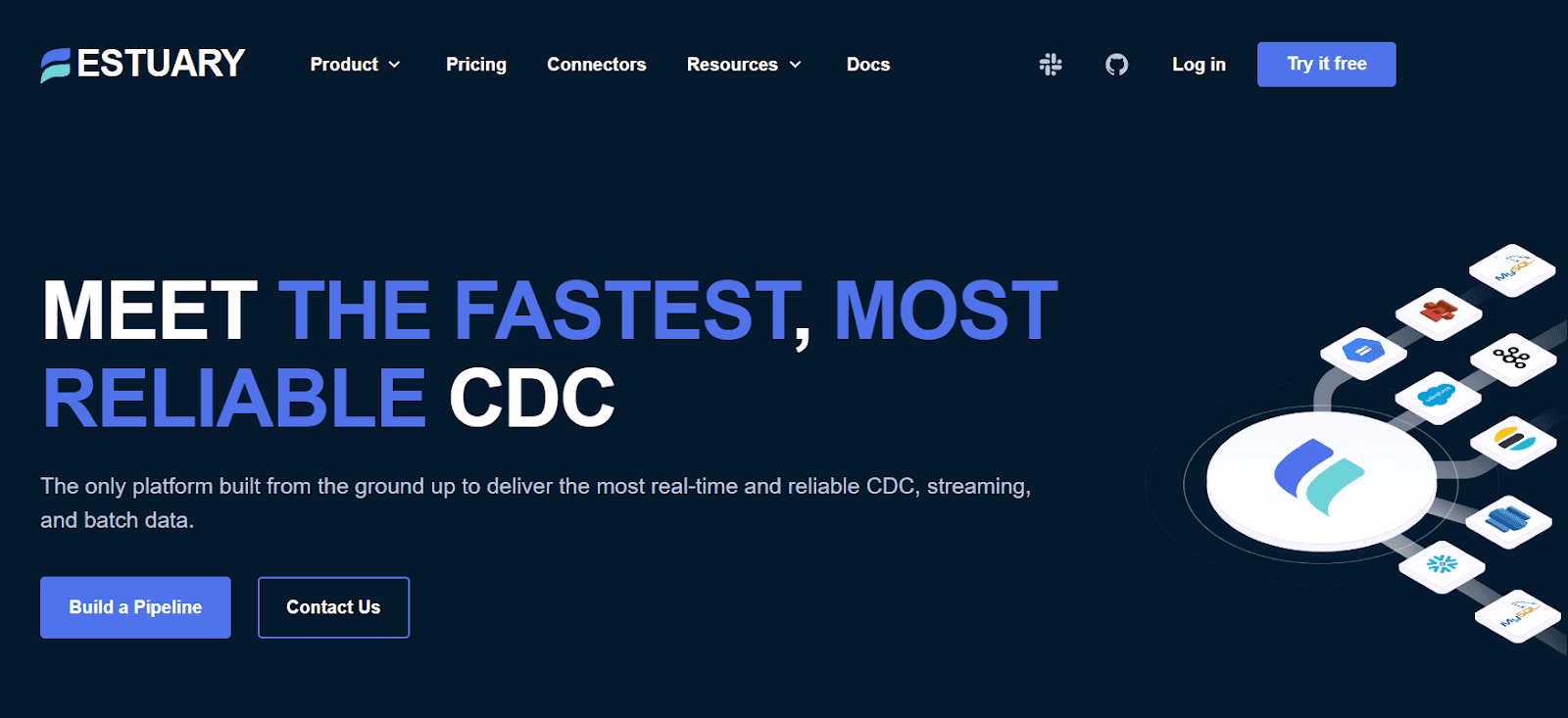
Estuary is the right time data platform that replaces fragmented data stacks with one dependable system for data movement. Instead of juggling separate tools for CDC, batch ELT, streaming, and app syncs, teams use Estuary to move data from databases, SaaS apps, files, and streams into warehouses, lakes, operational stores, and AI systems at the cadence they choose: sub second, near real time, or scheduled.
The company was founded in 2019, built on Gazette, a battle tested streaming storage layer that has powered high volume event workloads for years. That foundation lets Estuary mix CDC, streaming, and batch in a single catalog and gives customers exactly once delivery, deterministic recovery, and targeted backfills across all of their pipelines.
Unlike traditional ELT tools that focus on batch loads into a warehouse, Estuary stores every event in collections that can be reused for multiple destinations and use cases. Once a change is captured, it is written once to durable storage and then fanned out to any number of targets without reloading the source. This reduces load on primary systems, provides consistent history for analytics and AI, and makes it easy to replay or reprocess data when schemas or downstream models change.
Estuary can run as a multi tenant cloud service, as a private data plane inside the customer’s cloud, or in a BYOC model where the customer owns the infrastructure and Estuary manages the control plane. This gives security and compliance teams the control they expect from in house systems with the convenience of a managed platform.
Estuary also has broad packaged and custom connectivity, making it one of the top ETL tools. The platform ships with a growing set of high quality native connectors for databases, warehouses, lakes, queues, SaaS tools, and AI targets. Estuary also supports many open source connectors where needed, so teams can consolidate around one system while still covering niche sources and destinations. Customers consistently highlight predictable pricing, strong reliability, and partner level support as key reasons they choose Estuary instead of Fivetran, Airbyte, or DIY stacks.
Estuary Flow is highly rated on G2, with users highlighting its real-time capabilities and ease of use.
Pros
- Right time pipelines: Estuary lets you choose the cadence of each pipeline, from sub second streaming to periodic batch, so cost and freshness match the workload.
- One platform for all data movement: Handles CDC, batch loads, and streaming in one product, which reduces tool sprawl and simplifies operations.
- Dependable replication: Exactly once delivery, deterministic recovery, and targeted backfills keep pipelines stable even when sources or schemas change.
- Efficient CDC: Log based CDC captures inserts, updates, and deletes once and reuses them for many destinations, reducing load on operational databases.
- High scale architecture: Gazette and collections support large, continuous data streams with reliable throughput across multiple targets.
- Modern transforms: Supports SQL and TypeScript based transformations in motion, and integrates cleanly with dbt for warehouse side ELT.
- Flexible deployment choices: Available as cloud SaaS, private data plane, or BYOC, giving enterprises strong control over data residency and security.
- Predictable total cost of ownership: Transparent pricing based on data volume and connector instances avoids MAR based surprises and is easy to forecast.
- Fast time to value: A guided UI, CLI, and templates help most teams build their first dependable pipelines in hours instead of weeks.
- Partner level support: Customers report quick connector delivery, responsive troubleshooting, and SLAs that make Estuary feel like an extension of their team.
Cons
- On premises connectors: Estuary has 200+ native connectors and supports 500+ Airbyte, Meltano, and Stitch open source connectors. But if you need on-premises app or data warehouse connectivity, make sure you have all the connectivity you need.
- Graphical ETL: Estuary has been more focused on SQL and dbt than graphical transformations. While it does infer data types and convert between sources and targets, there is currently no graphical transformation UI.
Estuary Pricing
Of the various ELT and ETL vendors, Estuary is the lowest total cost option. Estuary only charges $0.50 per GB of data moved from each source or to each target, and $100 per connector per month. Rivery, the next lowest cost option, is the only other vendor that publishes pricing of 1 RPU per 100MB, which is $7.50 to $12.50 per GB depending on the plan you choose. Estuary becomes the lowest cost option by the time you reach the 10s of GB/month. By the time you reach 1TB a month Estuary is 10x lower cost than the rest.
How to choose the best option
For the most part, if you are interested in a cloud option, and the connectivity options exist, you may choose to evaluate Estuary.
Modern data pipeline: Estuary has the broadest support for schema evolution and modern DataOps.
Lowest latency: If low latency matters, Estuary will be the best option, especially at scale.
Highest data engineering productivity: Estuary is among the easiest to use, on par with the best ELT vendors. But it also has delivered up to 5x greater productivity than the alternatives.
Connectivity: If you're more concerned about cloud services, Estuary or another modern ELT vendor may be your best option. If you need more on-premises connectivity, you might consider more traditional ETL vendors.
Lowest cost: Estuary is the clear low-cost winner for medium and larger deployments.
Streaming support: Estuary has a modern approach to CDC that is built for reliability and scale, and great Kafka support as well. It's real-time CDC is arguably the best of all the options here. Some ETL vendors like Informatica and Talend also have real-time CDC. ELT-only vendors only support batch CDC.
Ultimately the best approach for evaluating your options is to identify your future and current needs for connectivity, key data integration features, and performance, scalability, reliability, and security needs, and use this information to a good short-term and long-term solution for you.
Related comparisons to Rivery
Related comparisons to Talend
Getting started with Estuary
Free account
Getting started with Estuary is simple. Sign up for a free account.
Sign upDocs
Make sure you read through the documentation, especially the get started section.
Learn moreCommunity
I highly recommend you also join the Slack community. It's the easiest way to get support while you're getting started.
Join Slack CommunityEstuary 101
I highly recommend you also join the Slack community. It's the easiest way to get support while you're getting started.
Watch


